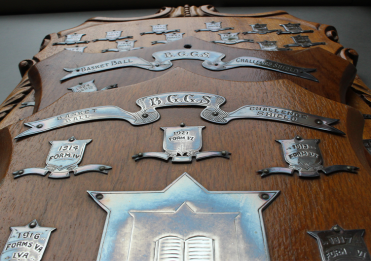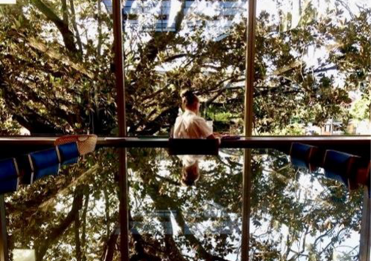If you were at Girls Grammar in the 1970s, you might have read the weirdly named student newsletter called Sock and Custard. This title may sound a little strange, but this newsletter was one example of a range of publications where student views were front and centre. At the time, students were finding their voice and flexing their right to speak. This may have been challenging for some, but Sock and Custard was published and, especially in the twenty-first century, it is enlightening to read and acknowledge those activities that were not especially mainstream.
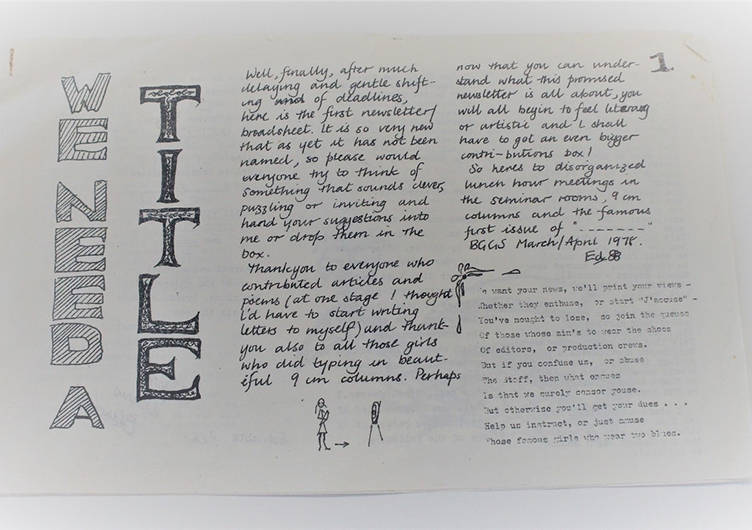
March/April Sock and Custard before it was titled
From where on earth did the Sock and Custard name emerge? Spike Milligan, one of the founders of The Goons, an iconic British comedy program, avidly embraced bizarre sound effects to emphasise his surreal humour. Famously, Milligan once filled his socks with custard in the BBC canteen and swung them at some plywood to get the required squelching sound. Were the Grammar girls who chose this name being ‘gooney’, comedic, ironic—or they simply wanted to get the reader’s attention?
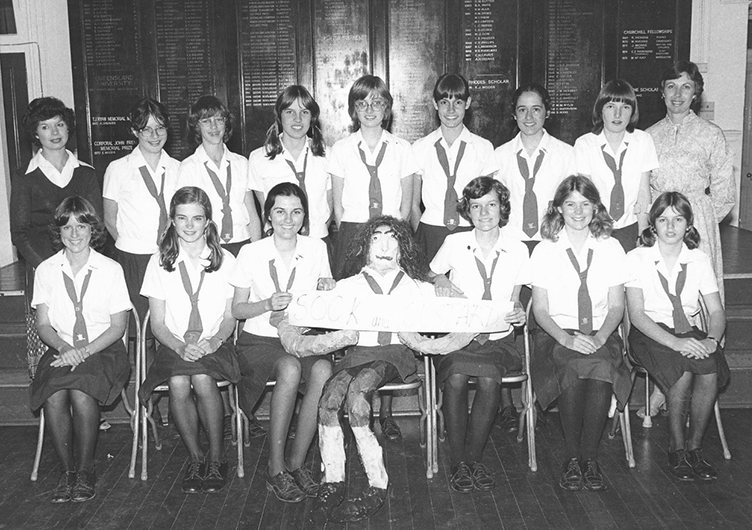
1979 Sock and Custard committee: Back row L to R: Jan Connor (Principal’s assistant secretary) Deidre Mahoney, Sally Clarke, (Unknown), Diane Hawes, Kathryn Rutkin, Anna Joughin, (Unknown); Front row L to R: Helen Clark, Alison Harris, Maree Ploetz, a rather interesting student representing the ‘Student Body’ Anne Jell, Amanda Hirschfeld, and (Unknown) *If you can help name the students in the photograph above, please contact the School Archives
Whatever the reason, this publication certainly offered insight into Grammar girls’ perspectives, lives, and interests. More than other more formal examples, this newsletter, produced between 1978 and 1980, was undoubtedly more idiosyncratic, quirkier, and irreverent. And what was included in this relatively short-lived publication?
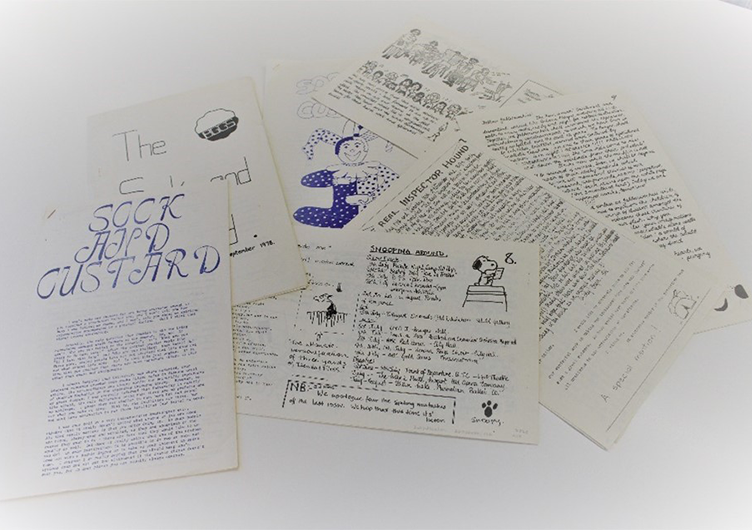
Numerous editions of Sock and Custard
Readers can learn the intimate details of the day-to-day school life of Grammar girls. The articles and cartoons do not hold back from revealing the good, the bad, and the silly. However, that is not, in any way, to belittle the purpose and the content of what could be perceived, naively, as an ephemeral artefact hastily ‘run off on the Roneo machine’. Oh, how those purple-printed pages bring back memories!
One edition, 18 September 1978, includes an interview with the Principal at the time, Mrs Judith Hancock. Her answers to the questions were informative and considered. The students, Helen Rose, Amanda Hirschfeld, and Rowena Harris, asked their Principal what she hoped a student has gained by the time she leaves in Year 12. Mrs Hancock answered, ‘To respect her fellow man and herself, and to be able to take her place in the adult world.’
Illustrations in the form of drawings, patterns, and cartoons were a feature of every edition. Many were witty and pointed caricatures of student behaviour—and dress. However, teachers did not miss out, and drawings of them reveal that they were acutely observed.
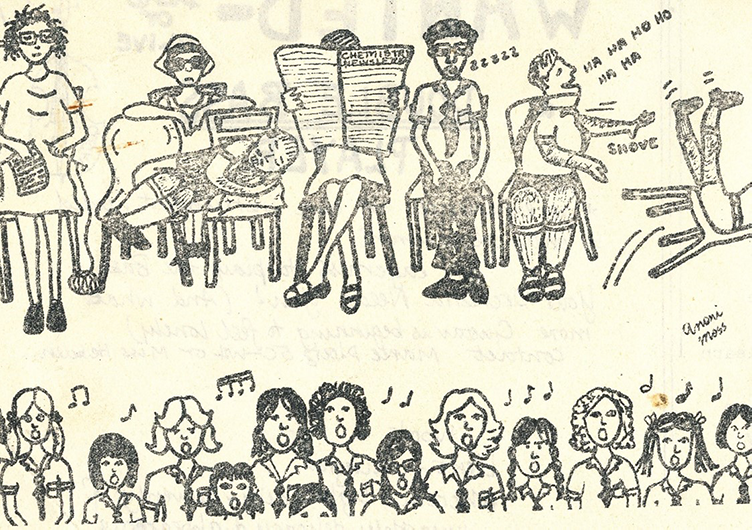
1978 Sock and Custard illustration of assembly with staff and students
Teachers’ quotations were a recurring addition:
‘I don’t know how solubility equilibrium might be interesting, but I’m sure it’s possible.’
‘I’m on a little platform out front here. I could fall off at any time.’
‘These sums are almost mental.’
In addition, staff involvement in school camps was noted. One Third Form camp was reviewed in detail. Mrs Mills brought her young son. The writer particularly enjoyed the final night concert and asserted that ‘the highlight … was a tie between Mrs Mills son, who kept appearing on stage, and the male staff members—showing off their grace at dancing in bikinis.’ [My recollection of this very popular item was that the teachers had donned bikini tops over their regular clothing—but the dance was enthusiastically cheered.]
Was Sock and Custard a product of the 1970s? Its tone and content seem to imply a time when students were keen to express their opinions and felt they had the right to do so. However, the voice of the Grammar girl has always been heard and will continue to speak up for the important and the serious—but, perhaps, just as importantly, for the silly, satirical, and the idiosyncratic. How right it is that the School remembers and celebrates these fragile expressions of voices from the past.
Mrs Kristine Cooke (1967)
Director of Information Services


